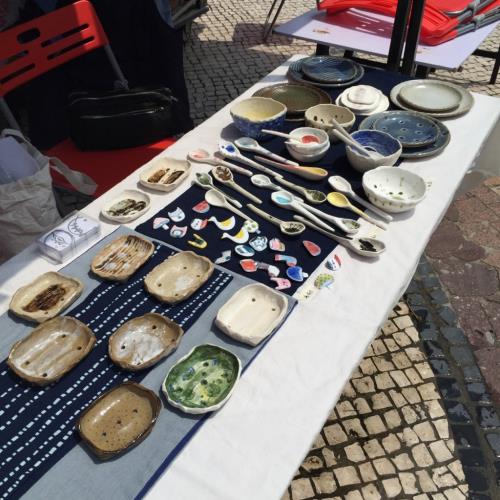Eugenia Lo is an independent journalist and editor. She is a Master of Criminology researching the public security system in Mainland China. With a strong family ties in Macao, Lo is a constant researcher of the city’s cultural and social development. Over the years, Lo works with many international corporations and institutes including the University of Hong Kong, British Council, Commercial Press (H.K.), Joint Publishing (H.K.), etc. for various editing, PR and translation projects.

Visiting local markets is always on my “to-do” list whenever I visit New York City, London or other major European cities, hoping to find some nice little decoration items, artworks or vintage clothes. Finding what I love in a busy market place is a pleasant experience because the items sold there are often unique. I also enjoy talking to vendors about their work and collection. Such interaction has pulled the buyer and seller closer.
The Macao S.A.R. Government has been organising holiday markets in recent years. Although the scale and the quality of the items sold at the markets are yet to catch up with those in the United States and Europe, it is a good start. I observe that many up and coming local handicraft artists and designers are joining the Macao markets.
Across the sea in Hong Kong, the market culture is flourishing with varieties. Organisers of the markets have changed from the government or non-profit organisations to private organisers at factory and commercial buildings, providing the participants more choices.
Er tong is an artistic group of two, using ceramic materials as their medium. Recently they have been actively participating in markets to display and sell their artwork. In order to choose the perfect market, Er tong once went to four different markets at Kwong Tong and Sham Shui Po in one day. There are a lot to observe in a market, including exhibition space, facilities, size of the display table, power supply, aisles and crowd control. Media exposure of a market is essential as well. Some market organisers would actively invite media for interviews and send promoters to the streets during the market days.
Rent, of course is an important concern. The daily rent of a stall in a private market costs a few hundred dollars. The vendor-to-be is advised to read the regulations carefully as one market charges the vendor on daily rent, while other might ask the vendor to rent the stall for the entire event if the market lasts for a few days. Last but not least, weather is crucial for a successful market day. Outdoor markets may be affected by the hot weather or rain. Some indoor markets held in old residential buildings are bustled with a big crowd and music, as some markets might have live performance, however, the noise might cause disturbance to the neighbours.
After choosing a suitable market, Er tong would spend at least a month to prepare for the big day. They made dozens of ceramic spoons and bowls for the last market. It was quite a success since all their products were sold out and some eager customers even placed order for custom made items. “The sale is better each time and we will continue to join markets. We also plan to make new products, such as ceramic jewelry,” said Er tong.
Art value is more than money, so fixing price for items is an art. For Er tong, ceramic art and daily life are inseparable. They hope the customers would use what they buy, so they decide to set a reasonable price for the products. However, since the demand is growing, Er tong will adjust the price accordingly.
Er tong is also planning to join the “virtual markets”, i.e. online business platforms for handicraft and designer products such as Pinkoi. Virtual markets are developing rapidly over the years. Found in 2005, Etsy is an online marketplace for handmade and vintage goods with 1.4 million active sellers and nearly 20 million active buyers. Pinkoi is another online marketplace targeting the Chinese community. With bilingual (English and Chinese) display, Pinkoi has an online magazine to promote new cultural and creative products. Some Macao-based designers and handicraft artists have already joined Pinkoi, others should also pay closer attention to the virtual markets.